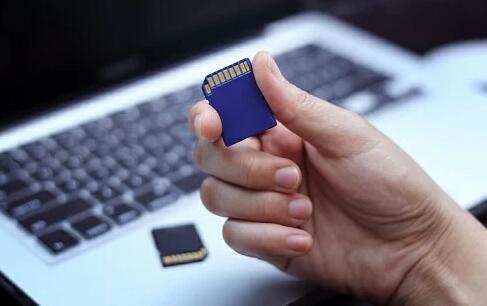Whether you accidentally deleted important files, formatted the card, or experienced data loss due to corruption, there are methods to recover your data.
SD Card Data Storage
Before diving into recovery methods, it’s essential to understand how SD cards store data. An SD card is a flash memory device that retains data even when powered off. When you delete a file from an SD card, the operating system typically marks the space occupied by that file as available for new data, but the actual data remains intact until it’s overwritten. This characteristic is crucial for recovery; if you act quickly, there’s a high chance of retrieving the deleted files.
Step 1: Stop Using the SD Card
The first and most important step in data recovery is to stop using the SD card immediately. Continuing to use the card can lead to new data being written over the space where your deleted files were stored, significantly decreasing the chances of a successful recovery.

Step 2: Check for Backups
Before attempting recovery methods, check if you have backups of your data. Many devices automatically back up data to cloud services or local drives. If you use a smartphone or camera, check their respective apps or settings for backup options. Restoring from a backup is often the simplest solution.
Step 3: Use Data Recovery Software
If no backups are available, you can use data recovery software. Here’s a step-by-step guide on how to use such software:
Choose the Right Software: There are many data recovery programs available, both free and paid. Some popular options include:
Recuva
EaseUS Data Recovery Wizard
Disk Drill
Stellar Data Recovery
Download and Install: Choose a software solution that suits your needs. Download it onto your computer, not the SD card, to avoid overwriting data.
Connect the SD Card: Insert the SD card into your computer using an SD card reader. Ensure it’s recognized by the system.
Run the Recovery Software:
Launch the recovery software.
Select the SD card from the list of drives.
Initiate a scan. Most programs offer a quick scan followed by a deep scan for more thorough results.
Preview and Recover Files: Once the scan is complete, you’ll be presented with a list of recoverable files. Preview the files to check their integrity and select the ones you want to recover. Choose a different storage location (like your computer’s hard drive) for recovery to avoid overwriting data on the SD card.
Save Recovered Files: Follow the prompts to recover your selected files. After recovery, ensure you verify the integrity of the files before using them.
Step 4: Manual Recovery Techniques
In some cases, you might be able to recover files manually, especially if the SD card was corrupted rather than deleted. Here are some techniques:
Check Hidden Files: Sometimes, files are not deleted but simply hidden. Enable the option to show hidden files in your computer’s file explorer settings.
Use Command Prompt (Windows):
Open Command Prompt as an administrator.
Type chkdsk X: /f (replace “X” with the drive letter of your SD card).
This command checks for and fixes filesystem errors, which might restore access to hidden files.
PhotoRec: This is a powerful open-source tool for recovering lost files, including photos and documents, from memory cards. It operates by bypassing the filesystem and scanning the disk directly.
Step 5: Professional Data Recovery Services
If you’ve exhausted all options without success, consider reaching out to a professional data recovery service. These services can be costly but often have the expertise and tools necessary to recover data from severely damaged or corrupted SD cards. Ensure you choose a reputable service, as they will often offer a no-recovery, no-fee guarantee.
Preventative Measures
To avoid future data loss, consider the following preventative measures:
Regular Backups: Establish a routine for backing up data on your SD card. Use cloud storage or external drives to keep copies of important files.
Safely Eject the SD Card: Always use the “safely remove” option before disconnecting the SD card from your computer or device. This reduces the risk of corruption.
Use Reliable Hardware: Invest in high-quality SD cards from reputable brands. Lower-quality cards are more prone to failure.
Keep Software Updated: Ensure that any devices and software you use with the SD card are updated regularly to minimize compatibility issues and bugs.
Regularly Check for Errors: Occasionally run diagnostics on your SD card to check for errors or signs of corruption. Early detection can help prevent data loss.
About us and this blog
Panda Assistant is built on the latest data recovery algorithms, ensuring that no file is too damaged, too lost, or too corrupted to be recovered.
Request a free quote
We believe that data recovery shouldn’t be a daunting task. That’s why we’ve designed Panda Assistant to be as easy to use as it is powerful. With a few clicks, you can initiate a scan, preview recoverable files, and restore your data all within a matter of minutes.
Subscribe to our newsletter!
More from our blog
See all postsRecent Posts
- Data recovery salt lake city utah 2025-04-18
- Data recovery sacramento 2025-04-18
- Data recovery miami 2025-04-18

 Try lt Free
Try lt Free Recovery success rate of up to
Recovery success rate of up to









